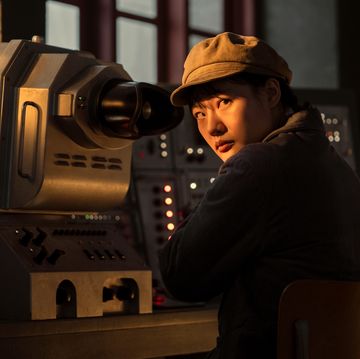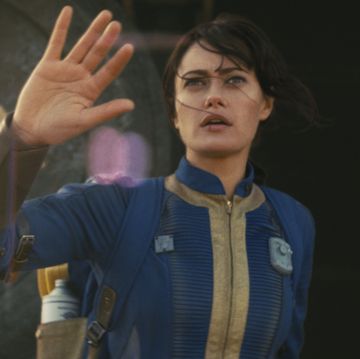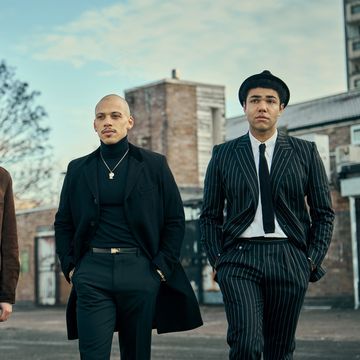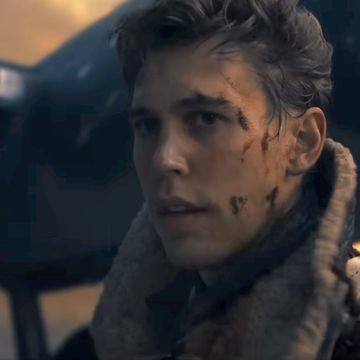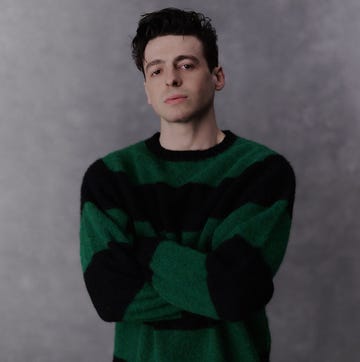Clever foreshadowing isn't easy. It's got to be subtle enough to not be super obvious, but clear enough to blow people's minds when pay off to the earlier hints does eventually arrive.
What follows are some of the times when our favourite shows got foreshadowing really, really right – the twist reveals, and the (very) long games. Warning: contains spoilers.
1. Lost – Locke explains the show's entire plot
When Locke told Walt in the second part of the Lost pilot that backgammon involves "Two players. Two sides. One is light, one is dark," we had a feeling it would be significant. We just didn't realise how significant. As it turned out, he was basically summing up the entire series – years before Jacob and the Man in Black's rivalry was revealed.
For those of you who don't think this counts as foreshadowing, because Lost was basically making it up as they went along, executive producer and co-creator Damon Lindelof disagrees. "We did know that when Locke referred to the black and the white, that ultimately that concept was going to be personified by two individuals."
2. Game of Thrones – Littlefinger predicts three major deaths
In season four's 'The Mountain and the Viper', Littlefinger monologues at Robin Arryn about the importance of YOLO: "People die at their dinner tables. They die in their beds. They die squatting over their chamber pots. Everybody dies sooner or later. And don't worry about your death. Worry about your life. Take charge of your life for as long as it lasts."
In that same season, Joffrey dies at a dinner table during his wedding, Tyrion strangles his former lover, Shae, in bed then kills his father, Tywin, while he's on a toilet.
We'd argue Littlefinger's psychic, but then he didn't see his own fate coming, did he?
3. Community – Beetlejuice, Beetlejuice, Beetlejuice
It's arguably as much of a running gag as foreshadowing, but as it only makes sense when it (visually) pays-off, we're saying it totally counts.
In Tim Burton's Beetlejuice, if you utter the title character's name three times, he appears.
Dan Harmon took this concept and spread it out over three seasons – having characters say the name in the passing once per season, with the season three mention (in Halloween episode 'Horror Fiction in Seven Spooky Steps') leading to a background character – in full Beetlejuice costume – walking into frame immediately afterwards.
Genius planning, and very satisfying for anyone paying close attention.
4. Buffy The Vampire Slayer – Willow coming out
Some fans were annoyed when Willow came out, not because they're not supportive of the LGBTQ experience, but because they felt it was too sudden, with the character's sexuality being used for a plot twist.
But they'd clearly forgotten this moment from season three's 'Doppelgangland' where Willow reflects on the fact her vampire doppelganger was "kinda gay".
Buffy tells Willow that vampires retain nothing of the original human's personality, when Angel begins to explain that's not the case, reads the room, and quickly shuts up.
If this 'gag' hadn't have paid off, it could have been read as homophobic. But as it stands, it was an early clue Willow would go on to have one of the most powerful relationships on the show, with tragic Tara.
5. Futurama – Nibbler's shadow
The origin of the term 'foreshadowing' is a play on the concept of a shadow appearing before an object, to suggest something's on the way.
Because the makers of Futurama are so damned smart, they decided to play with this concept by placing a literal blink-and-you'll-miss-it shadow of a character (Nibbler) into season one's first episode, 'Space Pilot 3000,' waiting until season four to reveal what that character was up to (as it turns out, Nibbler was responsible for Fry getting frozen in the first place – wibbly-wobbly, timey-wimey).
According to co-creator Matt Groening: "What we tried to do is we tried to lay in a lot of little secrets in this episode that would pay off later."
6. American Horror Story: Asylum – Bloody Face's identity revealed
Another shadow trick, American Horror Story: Asylum basically foreshadowed the second season's biggest twist in a promotional poster – before the show even aired!
Yep, this series of AHS revolved around the mystery of Bloody Face's identity. But, if you'd taken a close look at the above image, you'd have known long before the reveal came in the series – Bloody Face stands where Dr Oliver Thredson (Zachary Quinto)'s shadow should be and, sure enough, Thredson turned out to be the masked maniac.
This one's mainly satisfying after the fact – it was good to see how much attention to detail AHS pays to every last detail, even its marketing.
7. American Horror Story: Coven – The Supreme tip-off
Man, AHS loves hiding the answers to its big mysteries in plain sight. In Coven, we wait an entire series to find out who the next 'Supreme' will be – a witch who can wield seven powers.
But the answer was there all along in the opening credits – Sarah Paulson's title card always appearing with the Mexican female deity Santa Muerte (Holy Death)... the Lady of the Seven Wonders. We eventually find out Paulson is indeed the Supreme, because the show is just that clever.







